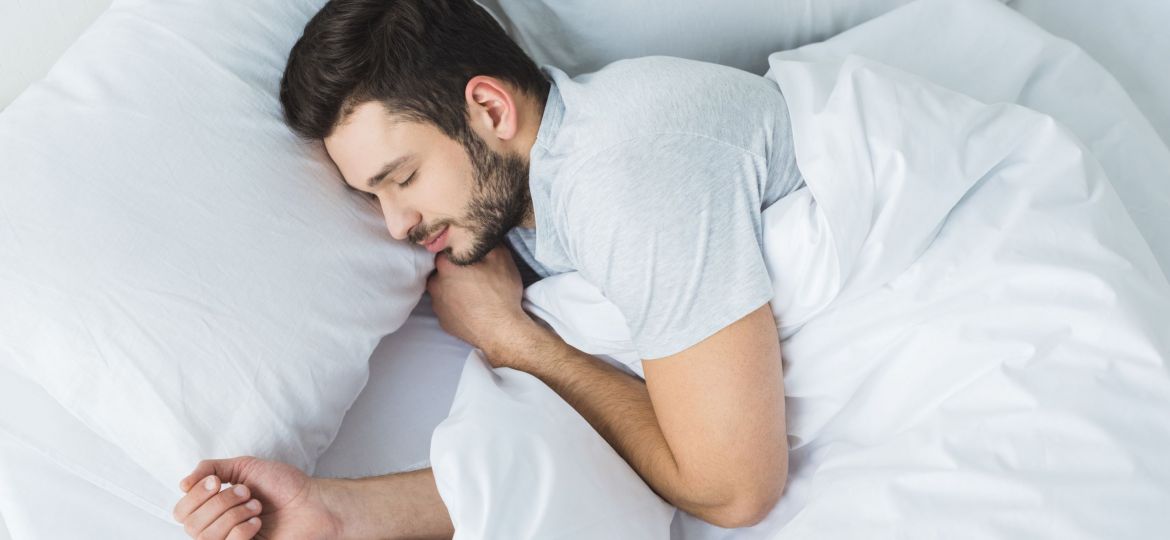
Periodic limb movement disorder (PLMD) is a sleep disorder characterised by repetitive and periodic involuntary movements. It is a disorder that only occurs during sleep, and these movements involve rhythmic contractions of the muscles, jerking movements, and cramping or upward flexing of the feet. The person is often unaware of doing such involuntary moments.
These movements can happen every 20-40 seconds for up to an hour. PLMD is considered a neurological disorder that disrupts sleeping patterns and can lead to excessive daytime sleepiness as well as other sleep disorders such as sleep apnoea, sleep paralysis and insomnia.
It is important to note that periodic limb movement disorder is not the same as restless leg syndrome (RLS). They have similar symptoms and can often occur together, but they are two conditions requiring different tests and treatments. Restless leg syndrome can lead a person to have trouble falling asleep, walking at night, daytime sleepiness or hyperactivity. In contrast, periodic limb movement disorder results from frequent limb movements during sleep. Not everyone with PLMD has RLS, but according to research, the prevalence of PLMD was 3.9%, and RLS was 5.5% in the general population, where RLS and PLMD were higher in women than men.
PLMD can occur within any age group, but like many sleep disorders, PLMD is more common in middle-aged, with women more likely to experience the disorder than men. It is estimated to occur in 4-11% of the adult population and 5-8% of children. Research shows that due to significant sleep delays and disturbance, PLMD can lead to function impairment, including hyperactivity, delayed language development and poor concentration and work performance in adults.
The limb movements associated with PLMD can disturb a bed partner’s sleep. Thus, having open communication and seeking help can be essential for maintaining a healthy sleep environment.
How does periodic limb movement disorder work?
Periodic limb movement disorder is when a person experiences periodic cramping and jerking movements.
PLMD can be primary or secondary.
Primary PLMD is where the exact cause of PLMD is unknown. Research shows that it is possibly caused by abnormalities in nerve regulation travelling from the brain to the legs, but this finding has yet to be consistently shown in research.
Secondary PLMD means the disorder is caused by an underlying health condition or medication use.
Secondary PLMD is more common and it can be due to various causes some of which include:
- Diabetes – is a condition that causes a person’s blood sugar levels to become too high or too low
- Anaemia – iron deficiency caused by the lack of iron
- Excessive intake of caffeine
- Spinal cord tumours
- Spinal cord injury
- Sleep apnoea – obstructive sleep apnoea characterised by pauses in breathing
- Narcolepsy – is a rare long-term brain condition where the brain the unable to regulate sleep
- Medication – certain drugs can worsen PLMD such as antidepressants, antipsychotics, anti-nausea medications, antihistamines
- Withdrawal – from sedative medications such as barbiturates or benzodiazepines
- Smoking
- Being overweight or obese
Educating individuals with PLMD about their condition, including its potential causes, triggers, and treatment options, is an important aspect of managing the disorder. This empowers individuals to actively participate in their care and transition to a more healthy lifestyle.
Signs and symptoms of Periodic limb movement disorder
Patients with PLMD may experience movements occurring every 20-40 seconds within an hour or more during the night. They commonly occur in the legs but may occur in the arms.
People with PLMD may also have symptoms of RLS. This may include burning or tingling sensations in the legs when lying down.
The most common symptoms of PLMD include:
- Poor sleep/insomnia – PLMD can cause disrupted sleep leading to frequent awakenings during the night.
- Daytime sleepiness
- Drowsiness
- Irritability
- Knee, ankle and big toe joints all bend as part of the leg movements
- Kicking, twitching, cramping, thrashing movements – some people may be unaware of the movements they do during the night.
- Movements lasting about 2 seconds
- Movements are rhythmic and periodic and occur every 20-40 seconds
The exact cause of PLMD is not known. However, it is hypothesised that dopamine may be involved in the origins of PLMD. There is evidence suggesting an association between PLMD and an imbalance in the neurotransmitter dopamine. Dopamine is crucial for controlling muscle movement, and disruptions in its levels may contribute to the periodic limb movements.
Pregnancy can influence the occurrence and severity of PLMD symptoms. Many women have significant sleep complaints during pregnancy. Hormonal changes and the physiological demands of pregnancy may contribute to the exacerbation of limb movements during sleep.
The diagnosis of PLMD can involve clinical evaluations and sleep studies. Clinical evaluations include a healthcare professional gathering a detailed medical history of your sleeping patterns, family history/genetics, underlying health conditions and symptoms. A GP may review the following to assess the severity:
- The frequency of the symptoms
- How does it affect their day-to-day life?
- How much of their sleep is disrupted?
Beyond sleep quality, healthcare professionals may assess daytime functioning, including mood, cognitive performance and overall quality of life, to comprehensively understand the impact of PLMD on an individual’s well-being.
The GP may also request a blood test to rule out other underlying causes of PLMD, such as anaemia, diabetes and kidney function problems.
They may also perform physical examinations to rule out causes and to assess neurological issues further. A sleep study can be used to detect movements. It can identify other conditions causing the symptoms, such as sleep apnoea, as well as other problems causing jerking and twitching movements.
Polysomnography can assist in the diagnosis of PLMD. It continuously records brain waves and the number of muscle and nerve functions during sleep. It also records oxygen levels, blood, heart rate and breathing during sleep. It also measures eye and leg movements.
Advancement in technology has meant that wearable devices and smartphone applications offer opportunities for the monitoring and managing of PLMD. Such tools can track sleeping patterns and provide additional information to healthcare professionals. Research shows that a smartphone application can accurately detect leg movements outside of the hospital environment and is a useful tool for screening and follow-up of patients with PLMD.
What treatments are available for periodic limb movement disorder?
Once a diagnosis has been confirmed, the healthcare professional will work to form a treatment plan for the individual. The treatment will work to address the underlying causes and this may include prescribing medications to control limbic movement and ways the individual can modify their lifestyle to improve their overall sleep.
Treatments available for PLMD are similar to those for restless leg syndrome. Medications either reduce the movements or help the person sleep through the movements. It is important to note that treatment does not cure the disorder but rather works to ease the symptoms.
Medications that have been shown to reduce the total number of periodic limb movements per hour have been enumerated below. Trials have been shown to improve sleep efficiency and sleep quality.
Medications used to treat PLMD and related disorders include:
- Pramipexole
- Ropinirole
- Rotigotine
- Gabapentin
- Pregabalin
- Clonazepam
It is important to note that with there being no further studies and evidence on the pharmacological treatments of PLMD, a critical clinical judgment is required before any medication is prescribed to a person with PLMD.
Antidepressants like mirtazapine, sertraline, fluoxetine and amitriptyline aggravate periodic limb movements thus, they should not be taken alongside PLMD medication. The relationship between antidepressants and PLMD is complex, and there can be drug-drug interactions which can have serious consequences on health. While these effects can vary among individuals, it is important that if you are being treated for PLMD and also require antidepressants communicate openly with your GP or healthcare professional so they can assess the potential risks of each medication as well as consider your overall health.
Other treatments may include relaxation techniques and mindfulness practices, which may be explored as complementary strategies to manage stress and promote better sleep in individuals with PLMD. Non-pharmacologic treatments include engaging in regular physical activity, which can positively affect sleep quality for individuals with PLMD and improve the quality of life in several aspects.
A quick round up
Periodic limb movement disorder (PLMD) can occur at any stage of life. It typically involves a twitching, flexing or jerking of the limbs during sleep. The rhythmic movements occur every
20-40 seconds at night, lasting up to 2-4 seconds. People with PLMD may not be aware of their condition, but often, their bed partners may report the limb movements. PLMD can occur in conjunction with other sleep disorders, such as RLS and sleep apnoea. Primary PLMD may be permanent. However, secondary PLMD may be eased by treating the underlying cause of the movements. Diagnosis typically involves clinical evaluation and sleep studies, and treatment may include medications and lifestyle modifications to manage symptoms and improve overall sleep quality.
While PLMD itself is not considered harmful, it is associated with sleep disturbance, which can impair the quality of life and increase sleepiness and other health issues. Addressing PLMD through proper management can improve daily functioning and well-being. Healthcare professionals will work to tailor treatment plans to the individual characteristics and preferences of those with PLMD. Personalised approaches include a combination of medication, lifestyle adjustments and cognitive-behavioural strategies.
PLMD can significantly impact sleep quality and daily functioning; therefore, if an individual suspects they may be experiencing PLMD or a related sleep disorder, they must seek guidance and proper evaluation from a healthcare professional or a sleep specialist to explore appropriate management strategies.
Concerned you may have PLMD?
Periodic limb movement disorder can profoundly affect your physical and mental well-being. It is important to contact the right doctors if you are struggling with your sleep.
As a leading sleep and respiratory physician specialising in PLMD and sleep-related breathing disorders, I offer consultations to diagnose and treat these conditions. Please contact me if you have any further queries about PLMD or want further advice on the potential diagnostics and treatments available.
